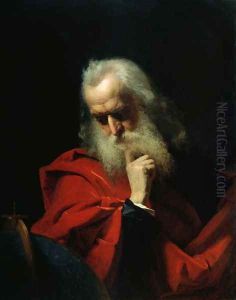Ivan Petrovich Keler-Viliandi Paintings
Ivan Petrovich Keler-Viliandi, also known as Johann Köler-Viliandi, was an Estonian artist recognized for his contributions to the development of Estonian national art during the late 19th and early 20th centuries. Born on December 23, 1887, in the Võru County of the Governorate of Livonia, then part of the Russian Empire, Keler-Viliandi was heavily influenced by the nationalist movement that swept through the region, which sought to promote Estonian culture and identity.
Keler-Viliandi's artistic journey began at a time when Estonia was undergoing a period of national awakening. He was initially educated at the St. Petersburg Academy of Arts, a prestigious institution that provided him with a classical education in the arts. His style was influenced by various movements of the time, including realism and later, nationalism. He was particularly known for his landscape paintings, which often depicted the serene and idyllic Estonian countryside, as well as his genre scenes that captured the everyday life of Estonian peasants. Through his art, Keler-Viliandi aimed to foster a sense of national pride and cultural identity among Estonians.
In addition to painting, Keler-Viliandi was involved in the Estonian art community as a teacher and mentor to younger artists. He was an active member of the Estonian Artists' Society and contributed to the organization of art exhibitions, which were crucial in promoting Estonian art and artists.
Ivan Petrovich Keler-Viliandi's career was tragically cut short when he died on April 17, 1924, at the young age of 36. Despite his relatively brief career, his work left a lasting impact on Estonian art. He is remembered for his dedication to portraying the Estonian landscape and people, and his legacy continues to inspire Estonian artists today. Keler-Viliandi's work is a testament to the role art can play in shaping and defining national identity, especially during periods of political and social change.
